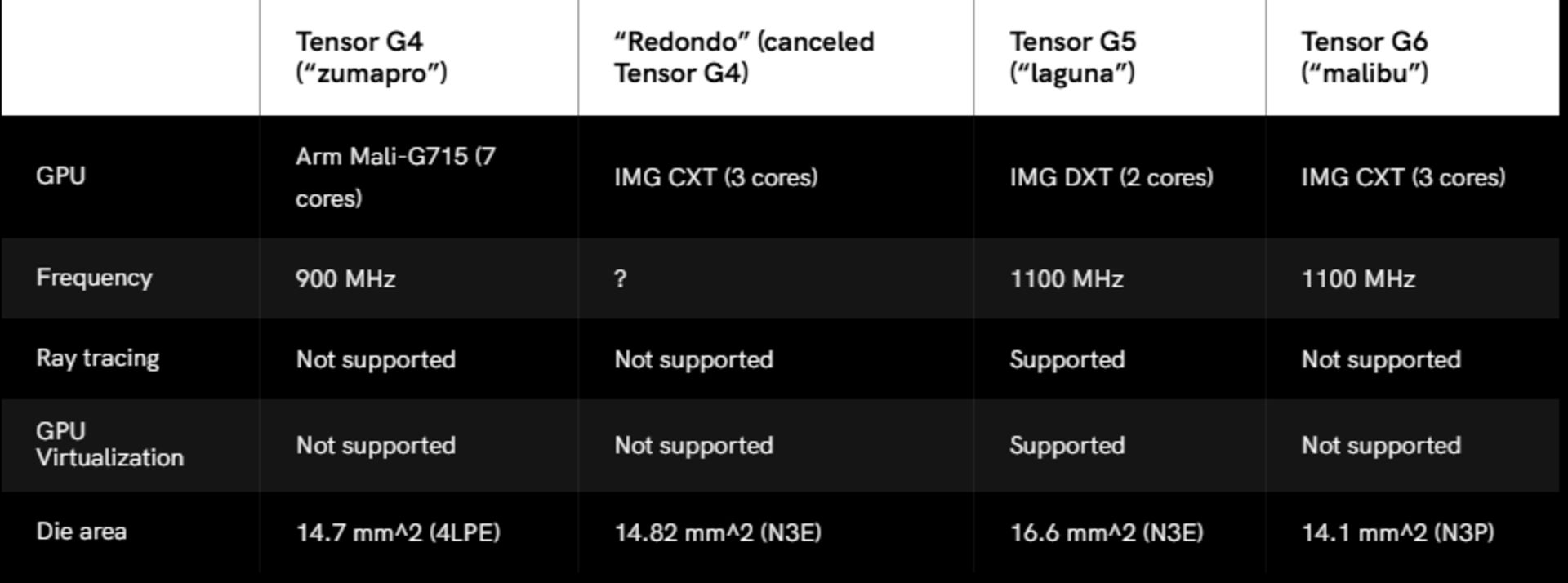
Since the introduction of Pixel 6, Google has used the exclusive Tensor chip for its phones; A chip that could not keep up with its competitors in terms of productivity and performance in any of its generations.
Internal Google documents obtained by Android Authority reveal that Google is developing the G6 Tensor chip, codenamed Malibu.

Android Authority
It seems that Google’s main focus in the Tensor G6 will be on improving thermal management and increasing the efficiency of the chip, and probably not a significant improvement in overall performance. Even the previous generation of this chip, the Tensor G5, is rumored to have a slight performance improvement.
Android Authority claims that Google will not be using a new GPU for the Tensor G6 and will use the Tensor G4 GPU instead. Thus, the G6 tensor will probably lose its ray tracing capabilities. While Tensor G5 is expected to support this feature.
The decision to use the G4 tensor graphics unit in the G6 is said to be due to Google’s aim to reduce the chip’s surface area. Apparently, the Pixel 10’s chip, using TSMC’s 3nm lithography, has a relatively large size of around 121mm square, while the size of Apple’s A18 Pro, which uses the same lithography, reaches 105mm square.
Related articles
Google’s goal for the Tensor G6 will likely be to bring the chip size to 105mm squared, which is calculated by taking into account the four percent area savings resulting from the use of TSMC’s new N3P lithography.
It is said that the use of G4 Tensor graphics reduces the chip surface area by about 12%. Google is reportedly trying its best to shrink the size of the chip by cutting one core in the DSP (digital signal processor) and halving the SLC cache to four megabytes.









